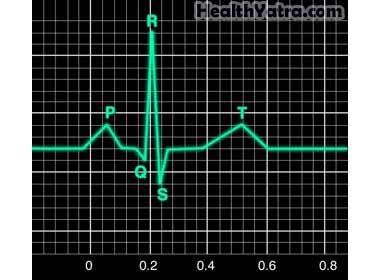تعريف
Heat exhaustion is an illness that occurs when someone is too active in hot temperatures. Heat stroke is a more severe illness that occurs under the same circumstances, but can be life-threatening.
أسباب
Both heat exhaustion and heat stroke happen under the following conditions:
- Very hot environment
- Heavy activity
- Too little fluid and salt intake
عوامل الخطر
عامل الخطر هو الشيء الذي يزيد من فرصتك في الإصابة بمرض أو حالة.
- Participating in a job or activity that involves long periods of outdoor activity in hot weather
- Age: elderly or the very young
- Taking drugs that interfere with the way your body handles hot weather, including:
- Phenothiazines
- Anticholinergics
- Antihistamines
- Beta-blockers
- البنزوديازيبينات
- Amphetamines
- Neuroleptics
- مضادات الاكتئاب ثلاثية الحلقات
- الكوكايين
- الكحول
الأعراض
Symptoms of heat exhaustion may include:
- Temperature over 37.8°C (about 100°F)
- ضغط دم منخفض
- Fast pulse
- Moist skin, sweating
- Muscle cramps and tenderness
- Nausea, vomiting
- الدوخة أو الدوار
- ارتباك
- الصداع
Symptoms of heat stroke may include:
- Temperature over 40.5° C (about 105° F)
- Weakness, dizziness
- عدم وضوح الرؤية
- Confusion, delirium, unconsciousness (can progress to coma)
- النوبات
- No sweating
- Pale, dry skin
- Fast breathing, fast irregular pulse, high blood pressure
التشخيص
سوف يسألك الطبيب عن الأعراض والتاريخ الطبي، وسيقوم بإجراء فحص بدني. قد تشمل الاختبارات ما يلي:
- تحاليل الدم
- Electrocardiogram (ECG, EKG) —a test that records the heart’s activity by measuring electrical currents through the heart muscle

العلاج
Heat Exhaustion
Treatment for heat exhaustion includes:
- Moving the person to a cool, shady area
- Giving adequate fluids—it is best to give fluids that contain both salt and sugar. If the person isn’t able to drink, it may be necessary to give fluids through an intravenous line.
- Encouraging the person to rest
Heat Stroke
Treatment for heat stroke includes:
- Removing clothing
- Moving the person to a cool, shady area.
- Actively cooling the person—the most effective way is called “evaporative cooling.” In evaporative cooling, the person is sponged with cool water or sprayed with cool mist, and fans are used to blow air onto the person.
- Giving intravenous fluids
- Giving medications—these may be necessary if the person is having seizures or uncontrollable shivering.
- Careful monitoring—People who have undergone heat stroke need regular and careful monitoring of body temperature, heart rate, blood pressure, and breathing rate. Blood tests will be repeated at regular intervals to monitor how the body’s organs are responding to the shock of heat stroke.
If you are diagnosed with heat exhaustion or heat stroke, follow your doctor’s instructions .
الوقاية
To help prevent heat exhaustion and heat stroke:
- Avoid prolonged exposure to high temperatures.
- If you have to work or exercise under hot conditions, drink lots of fluids (preferably sports drinks, which contain both salt and sugar), and take frequent breaks in the shade.
- If you have a risk factor for heat exhaustion or heat stroke, be very careful of doing activity in hot weather. Take regular rests and drink lots of fluids.
- During heat waves, try to spend time indoors with air-conditioning or go to an air-conditioned shelter. This is especially important for elderly adults.
